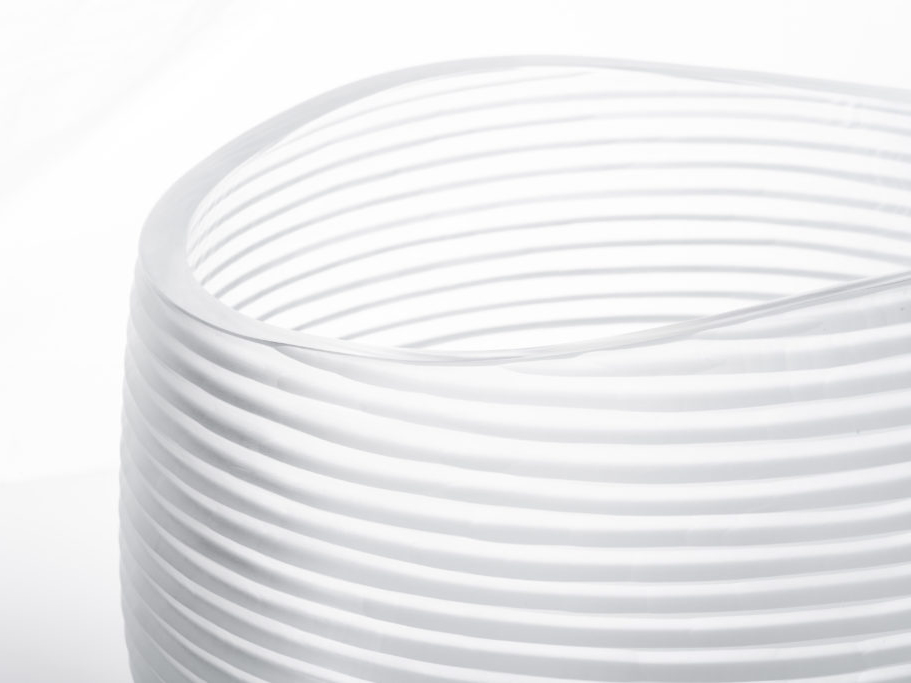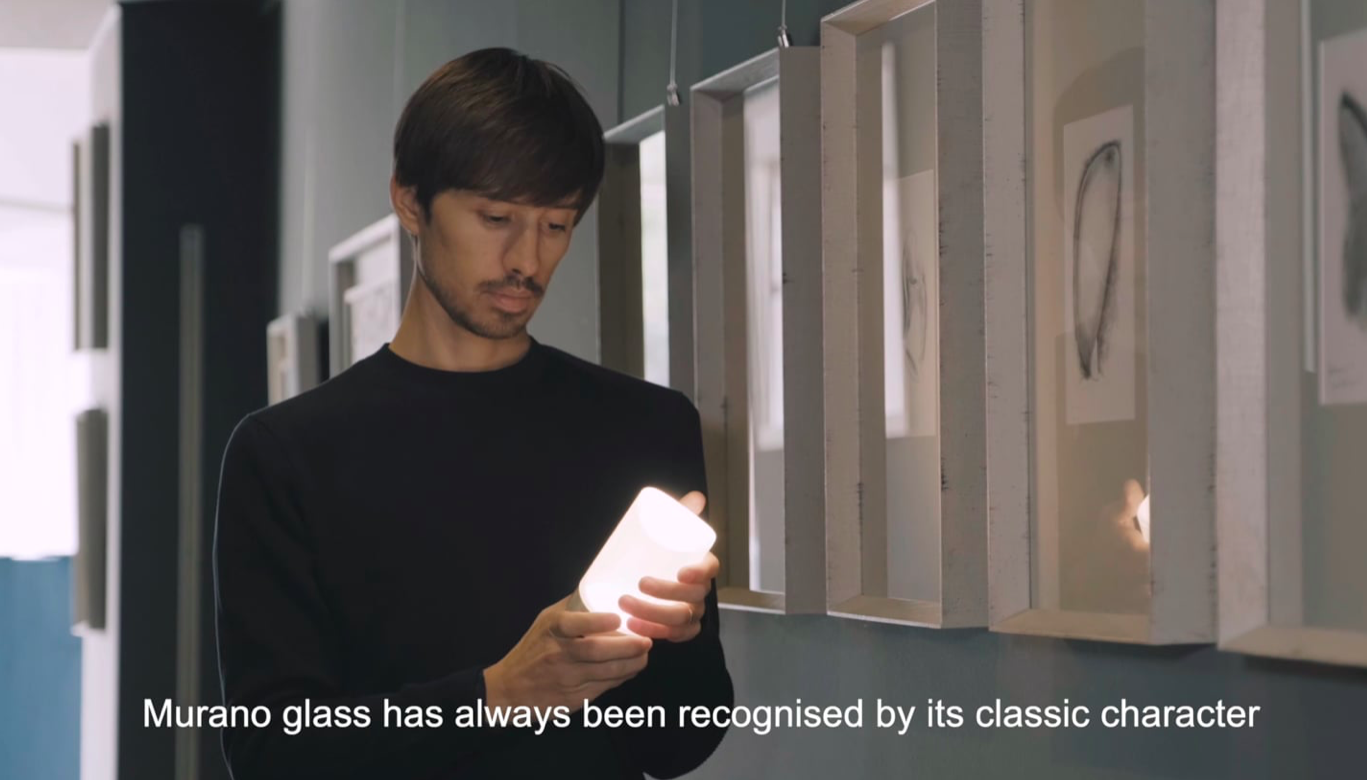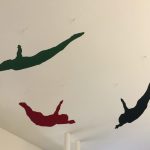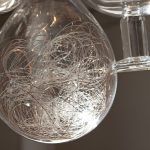Scroll down for English Version
Vetro. soffiato, colato, nastrato, inciso, artistico… Di Murano, Ceco o realizzato nei grandi centri internazionali poco importa. La curiosità e la fascinazione per questa straordinaria materia sono nate molti anni fa in maniera casuale. Oggi quella con il vetro è una frequentazione quotidiana, che si tratti di progetti seguiti per clienti — tra i più recenti vedi i primi due straordinari progetti proposti da Punta Conterie, il primo Lino Tagliapietra. Glasswork a cura di Alessandro Vecchiato e l’attuale Vetro e disegno. Il processo creativo nelle storiche vetrerie muranesi del ‘900 a cura di Caterina Toso — o di progetti personali, su tutti Light Blowing sviluppato a quattro mani con Ilaria Ruggiero dedicato a celebrare l’autorialità nel campo del lighting design in vetro soffiato.
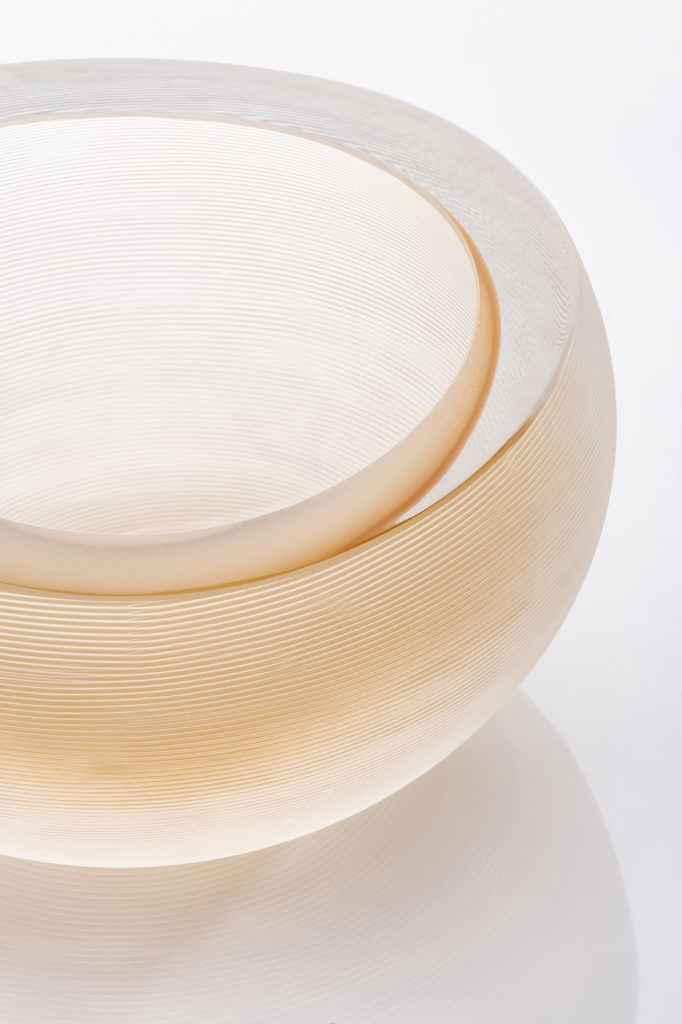
Linae Small Vase – Incisioni Collection by Federico Peri for Purho
Una frequentazione che inevitabilmente pone le eterne domande sul mondo del vetro, sul rapporto con il design internazionale, sull’autorialità del pezzo, sul rapporto tra creativo e Maestro, sul concetto di vetro contemporaneo e, non ultima, sulla cultura del vetro oggi. Da potenziare, rinvigorire o forse persino rilanciare soprattutto se intesa in un’ottica di attualità, di contemporaneità, di apertura alla ricerca e al confronto con il design quanto con la libera espressione artistica.
Da qui la voglia di approfondire con i protagonisti di questo mondo, scelti di volta in volta in maniera apparentemente casuale: perché coinvolti in un progetto comune, perché freschi di lancio di una nuova collezione o semplicemente perché la loro opinione va ascoltata.
A Federico Peri il compito di inaugurare questa carrellata di conversazioni su e attorno al mondo del vetro in occasione del lancio di Incisioni, la sua prima collezione per Purho, integralmente realizzata a Murano.
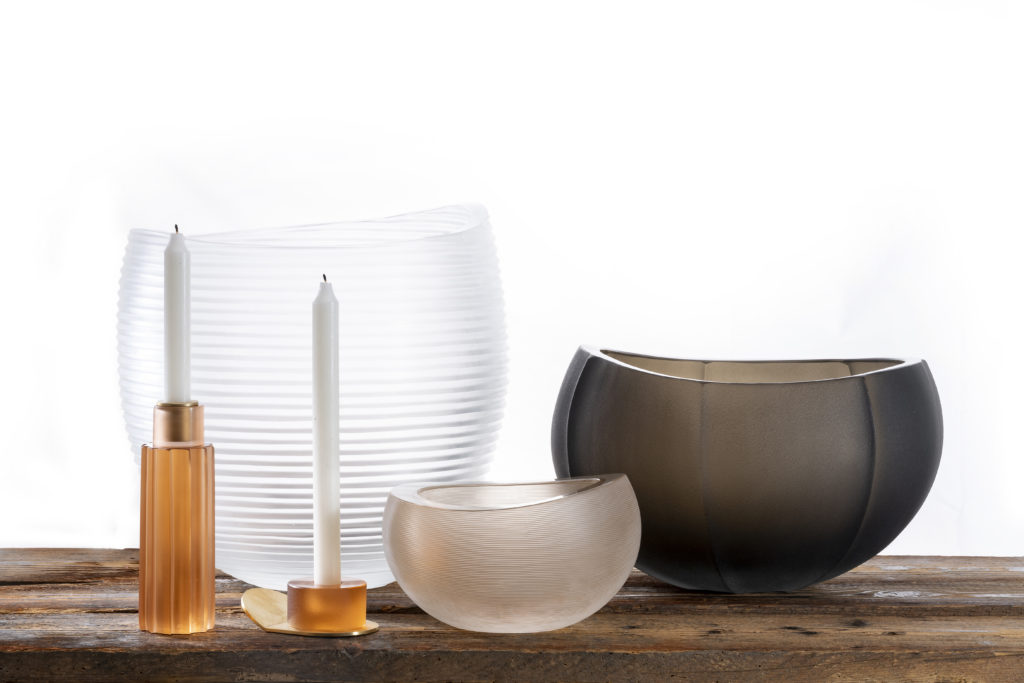
Incisioni Collection by Federico Peri for Purho
SP — Incisioni è la tua recentissima collezione per Purho fatta di oggetti dalle dimensioni contenute ma di grande forza espressiva grazie all’uso di incisioni, nastrature, plissettature sulle superfici.
Gli oggetti hanno mantenuto la corrispondenza con il progetto iniziale o sei dovuto intervenire in corso d’opera?
FP — Come spesso accade quando si lavora con il vetro senza l’utilizzo di stampi, è facile cambiare idea in corso d’opera o comunque modificarne in parte l’estetica. Ciò può essere dovuto a rivalutazioni del progetto o, soprattutto, spesso accade dopo il confronto diretto con il maestro.
SP — Ti sei divertito a disegnare una collezione di questo tipo?
FP — Certamente, l’aspetto che più mi è piaciuto è stato lavorare ad un progetto in divenire; Siamo partiti da una collezione e, lavorando ai primi prototipi, ci sono venute in mente una serie di altre idee che abbiamo pensato di approfondire ampliando di fatto la collezione “incisioni”.
La collaborazione con Purho è il classico esempio di quanto, per un designer, sia fondamentale saper ascoltare e imparare dall’azienda e dagli artigiani.
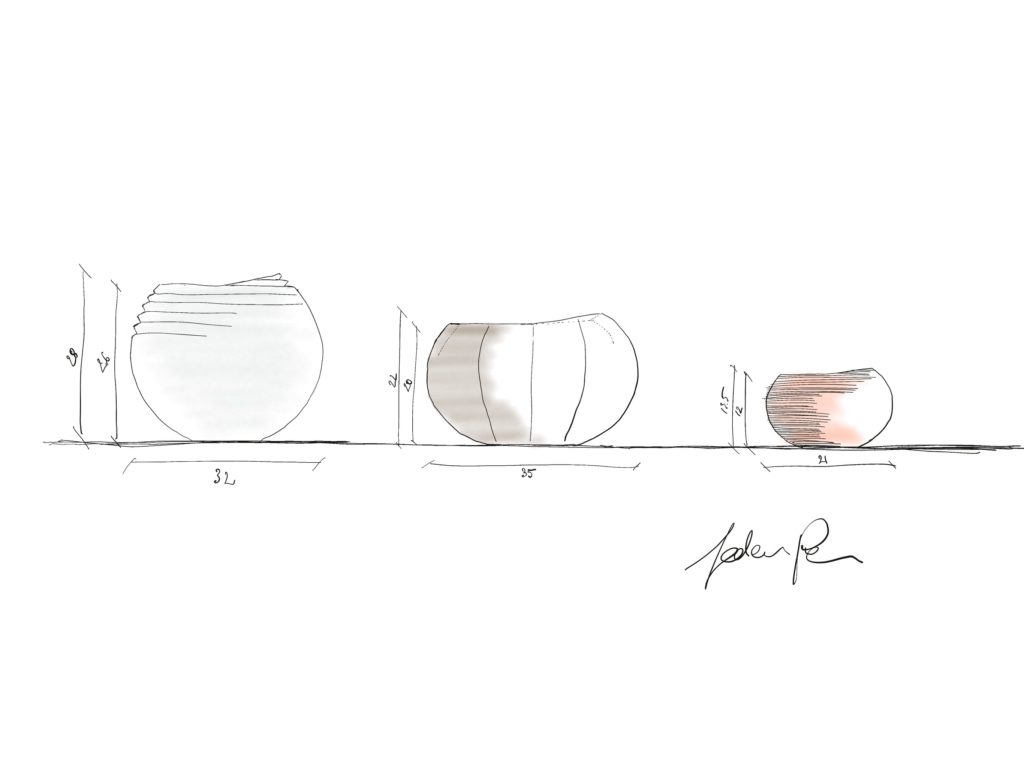
Linae Vases, sketch by Federico Peri for Purho
SP — Gli oggetti realizzati per Purho sono stati concepiti pensando ad un mercato ben preciso. Ciò nonostante sono un esempio riuscito tra funzionalità e ricerca formale.
Guardando in direzione opposta, senti il desiderio di sperimentare liberamente con il vetro di Murano senza vincoli? Se sì, hai già un’idea in mente?
FP — Si è un aspetto che mi interessa molto ma che al momento non ho mai avuto l’occasione di affrontare. È sicuramente nella “lista dei desideri” ma mi rendo conto essere una caratteristica distante dalle dinamiche aziendali.
Mi piacerebbe lavorare ad un’installazione con il vetro come tema principale, ovviamente. Qualcosa di artistico ma non fine a se stesso, dev’essere funzionale e al tempo stesso emozionale. Ho in mente qualcosa con vetro e acqua.
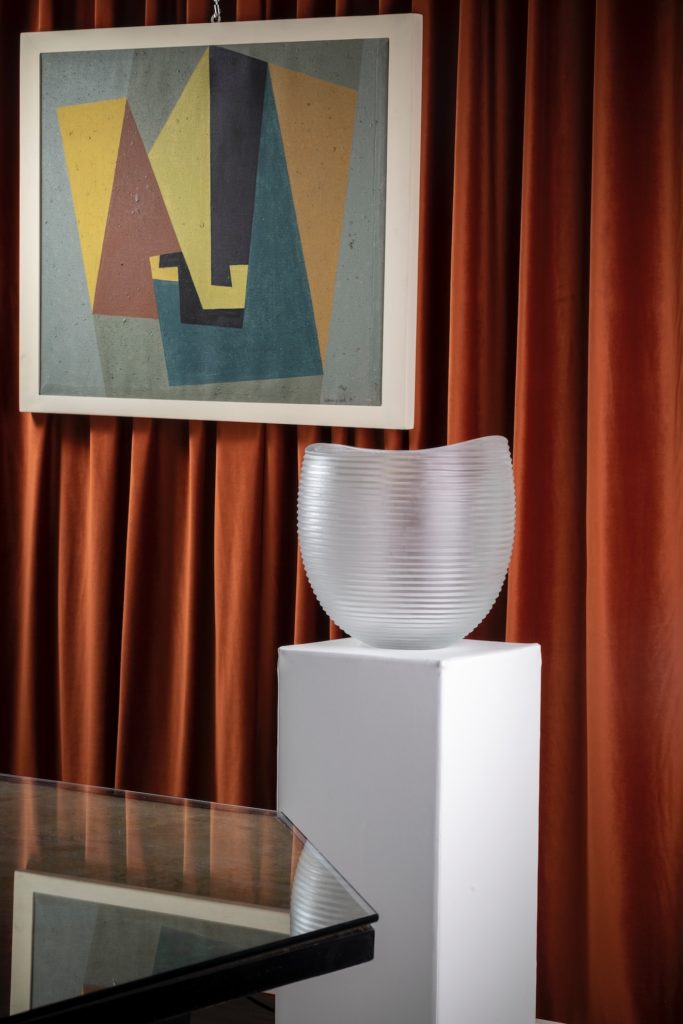
Linae Large Vase – Incisioni Collection by Federico Peri for Purho
SP — Quanto ritieni sia importante conoscere la materia vetro per la riuscita di un pezzo?
O reputi invece che il dialogo con il maestro possa sopperire a mancanze conoscitive da parte del designer?
FP — Conoscere la materia è fondamentale per approcciare il progetto ma, personalmente, credo sia l’ideale conoscerla per un 70/80%.
Ritengo ciò in quanto spesso molti progetti interessanti nascono proprio dall’inconsapevolezza che quello che si sta immaginando nasconde talmente tante insidie e difficoltà che si desiste nel procedere con la progettazione. Ignorare tutte le difficoltà permette spesso di pensare più liberamente ed è proprio qui che subentra la figura del maestro. Senza di lui molti progetti si fermerebbero al foglio di carta, non solo come realizzazione, mi riferisco anche al suo supporto nell’identificare i punti deboli dell’opera e suggerire eventuali migliorie.
Il vetro è una materia tanto affascinante quanto complessa ma che al tempo stesso permette un’infinita possibilità di risultati dati dalle combinazioni colore, forme, piuttosto che dalle incisioni. Giocare con le trasparenze, le texture, è ciò che del vetro amo maggiormente, spunti dai quali è nata la prima collezione
SP — Murano e il vetro oggi. Qual è a tuo giudizio la percezione attorno al mondo del vetro di Murano?
FP — Murano, per alcuni aspetti, mi sembra stia vivendo una sorta di “risveglio” dopo anni nei quali si è vissuto principalmente di storia e tradizione.
Constato con piacere alcune fornaci più aperte nei confronti dei designer, percepisco una voglia di innovazione e freschezza. Al tempo stesso, al di fuori della laguna, Murano resta sempre un luogo affascinante dove si avverano “magie”.
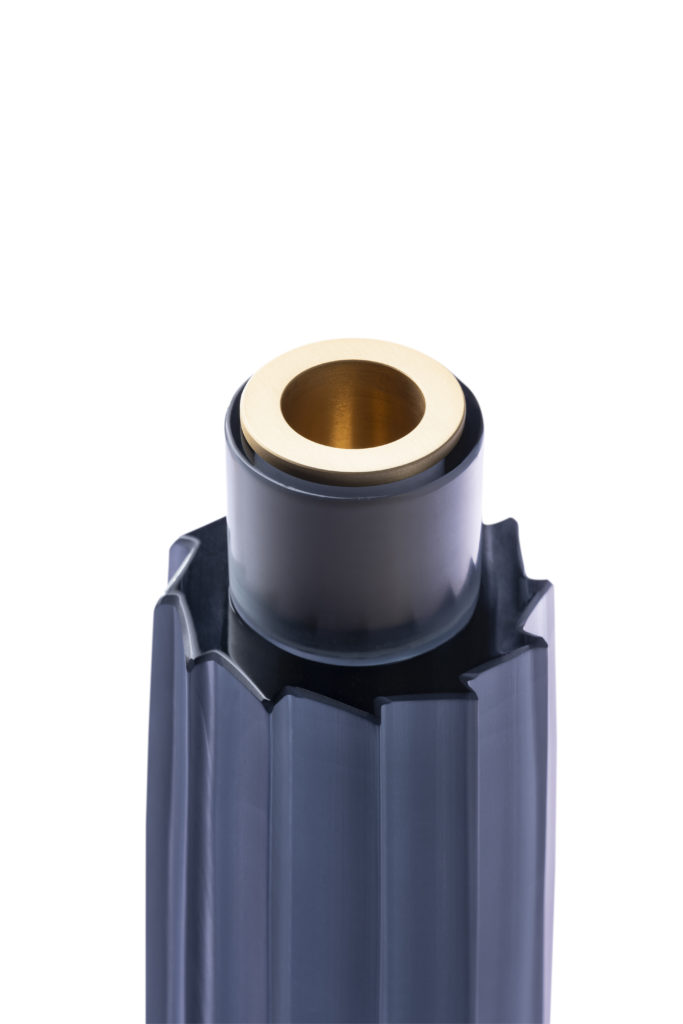
Lume Plissé – Incisioni Collection by Federico Peri per Purho [ detail ]
Murano, per i più, è solamente legata al vetro artistico. Aspetto nel quale sono maestri indiscussi ma ci sono anche altre espressioni del vetro che meritano approfondimenti… le incisioni ad esempio.SP — Vetro di Murano e design. La tua personale idea. Cosa manca? Cosa faresti?
FP — Nonostante la percezione stia piano piano cambiando, servirebbero più progetti/operazioni al fine di valorizzare il vetro contemporaneo. Iniziative come la glass week è sicuramente un appuntamento interessante, aiuta le persone a comprendere maggiormente il tema e sentirsi più vicine al mondo del vetro. Sarebbe importante potenziare i laboratori, non mi riferisco a divulgare i trucchi del mestiere ma è fondamentale che le persone comprendano il perché è complesso lavorare il vetro e quanto ancora si può fare, perché un certo costo e soprattutto perché è fondamentale far si che questa tradizione non si dissolva nel tempo.
guarda il video / watch the video
Glass. Blown, cast, banded, engraved, artistic … from Murano, the Czech Republic, or made in large international centres, it doesn’t matter. Curiosity about and fascination for this extraordinary material were born many years ago, quite by chance. Today the fascination with glass is a daily rapport, whether by way of projects followed for customers — take a look at the most recent ones, the first two extraordinary projects proposed by Punta Conterie, the first Lino Tagliapietra. Glasswork curated by Alessandro Vecchiato and the current Glass and Design. The creative process in the historic Murano factories of the 20th century curated by Catrina Toso — or personal projects, above all Light Blowing developed in partnership with Ilaria Ruggiero and dedicated to celebrating authorship in the field of blown glass lighting design.
This rapport will inevitably raise eternal questions about the world of glass, about its relationship with international design, on the authorship of the piece, on the relationship between the creative designer and the master glass blower, on the concept of contemporary glass and, last but not least, on the culture of glass. To be strengthened, reinvigorated, or perhaps even re-launched, especially if understood in a current context, of contemporaneity, of openness to investigating and making comparisons between design and free artistic expression.
Hence the desire to dig deeper with the key players of this world, chosen from time to time in an apparently random way: because of involvement in a shared project, because they are fresh from the launch of a new collection or simply because their opinion should be listened to.
Federico Peri has the task of inaugurating this roundup of conversations on and around the world of glass on the occasion of the launch of Incisioni, his first collection for Purho, entirely made in Murano.
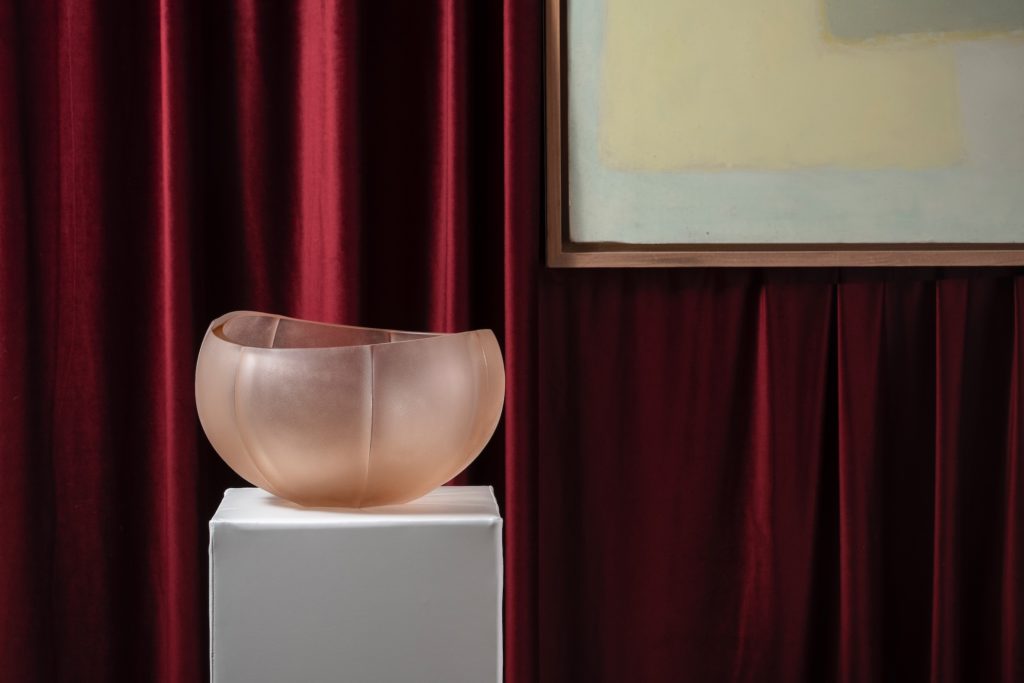
Linae Medium Vase – Incisioni Collection by Federico Peri for Purho
SP — Incisioni is your recent collection for Purho, made of objects with small dimensions but of great expressive force thanks to the use of engraving, banding, pleating on the surfaces. Did the objects maintain their correspondence with the original designs, or did you need to change some project detail while the work was being done?
FP — As often happens when working with glass without using moulds, it is easy to change your mind during the work or at least partially alter the aesthetics. This may be due to re-evaluating the project or, above all, it often happens after direct discussion with the glass master.
The collaboration with Purho is a classic example of how important it is for a designer to know how to listen and learn from the company and the artisans.
SP — Did you enjoy designing a collection like this?
FP — Of course, the aspect that I enjoyed most was developing a work in progress. We started from a collection and, working on the first prototypes, we came up with a series of other ideas that we decided to explore in greater depth by expanding the “incisioni” collection.
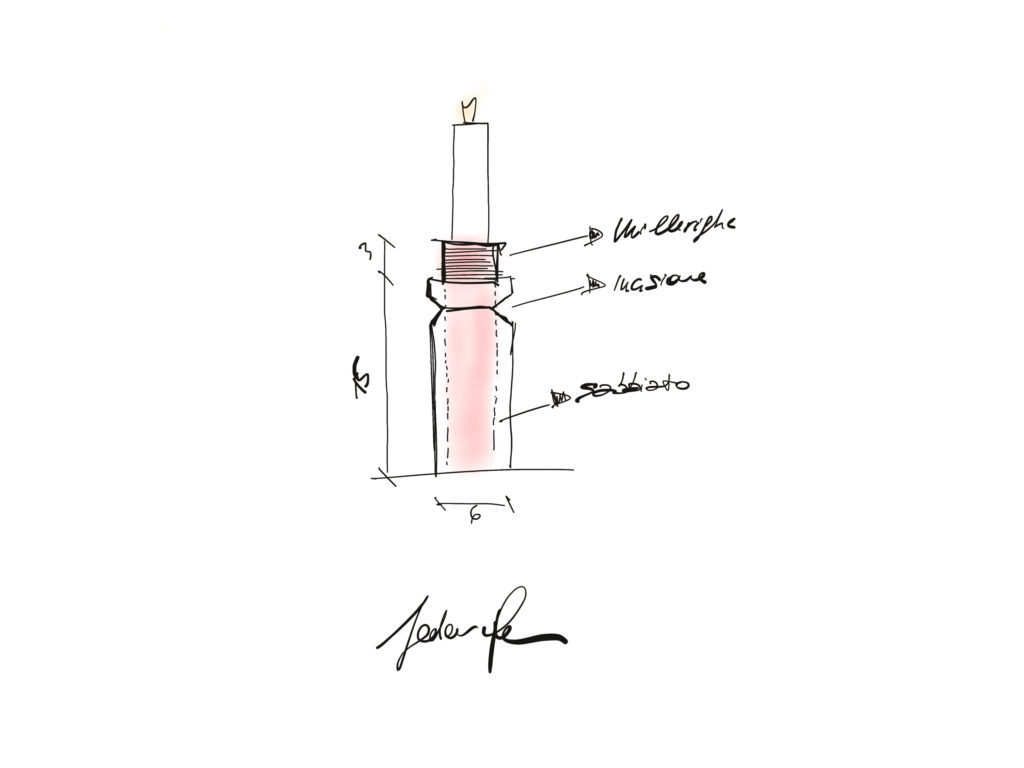
Lume, sketch by Federico Peri for Purho
SP — The objects created for Purho were conceived with a specific market in mind. Nevertheless, they are a successful example of the links between functionality and formal investigation.Looking in the opposite direction, do you feel the urge to experiment freely with Murano glass without constraints? If yes, do you already have an idea in mind?
FP — It is an aspect that interests me a lot but one which, at the moment, I have never had the opportunity to encounter. It is definitely on the “wish list” but I’m well aware that it is a feature far removed from dynamics of the business.
I’d like to work on an installation with glass as the main theme, of course. Something artistic but not as an end in itself, it must be functional and at the same time emotional. I have something in mind with glass and water.
Glass is a material that is as fascinating as it is complex, but which at the same time allows an infinite possibility of results given by the combinations of colours and shapes, more so than engraving. Playing with transparencies, textures, is what I love most about glass, and from these ideas the first collection was born.
SP — How important do you think it is to understand glass for a piece to be successful? Or, on the other hand, do you think that dialogue with the glass master can make up for the designer’s lack of knowledge?
FP — A knowledge of the material is fundamental in order to approach the design but, personally, I think a 70/80% understanding is ideal.
I believe this is because often many interesting projects are born from a lack of awareness that what you are imagining hides many pitfalls and difficulties that you would give up the design before you began. Ignoring all the difficulties often allows you to think more freely and it is precisely at this point that the figure of the glass master takes over. Without him many designs would stay on paper, and never come to fruition, andI’m also referring to his support in identifying the work’s weak points and suggesting improvements.
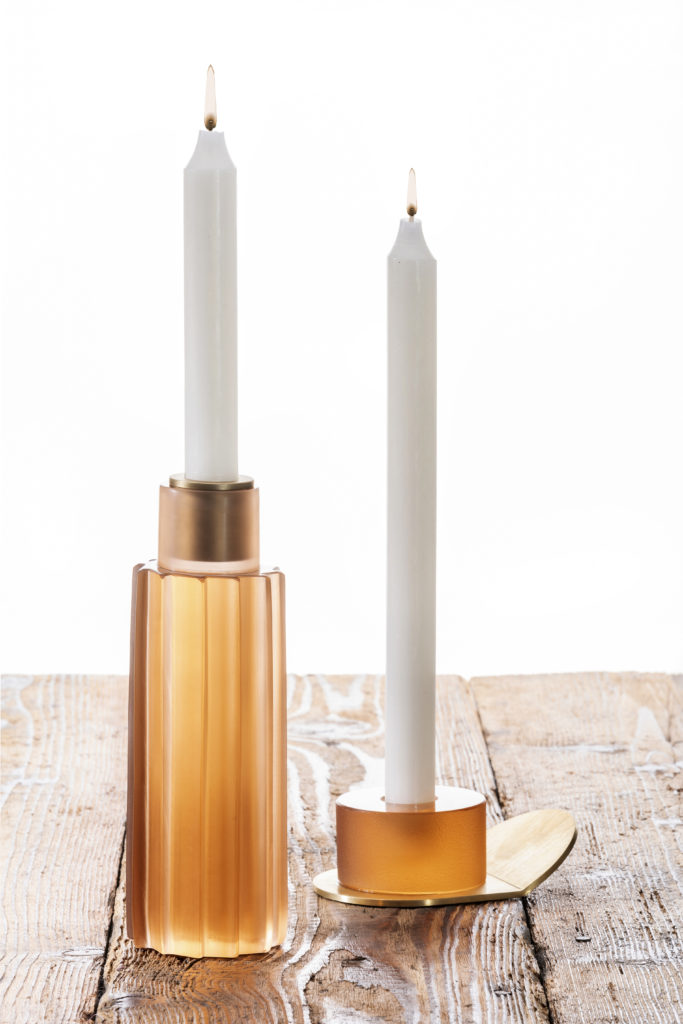
Lume and Lumino – Incisioni Collection by Federico Peri for Purho
SP — Murano and glass today.How, in your opinion, is Murano glass perceived around the world?
FP — Murano, in some respects, seems to me to be experiencing a sort of “awakening” after years in which we have lived mainly on history and tradition.
I am pleased to see some furnaces that are more open to designers, I perceive a desire for innovation and freshness. At the same time, outside the lagoon, Murano always remains a fascinating place where “magic” is worked.
SP — Do you think that an adequate culture of glass is lacking? If yes, for what reason?
FP — Yes. I myself, despite being a designer, was not aware of various techniques when I first started working with the glass furnaces. Of late I have realised that many people are not aware that engraving glass is just as much an art as blowing it and that working freely is totally different from working with a mould.
Murano, for the most part, is only linked to artistic glass; They are the undisputed masters of this, but there are also other aspects of glass that deserve further study … engraving for example.
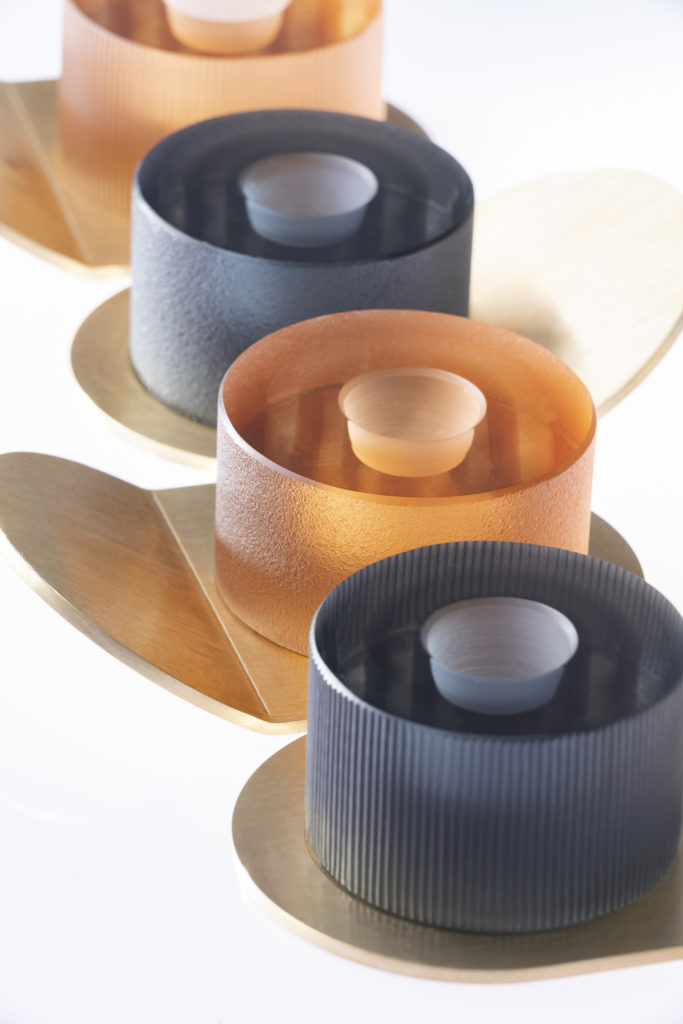
Lumino – Incisioni Collection by Federico Peri for Purho
SP — Murano glass and design. Your personal idea. What’s missing? What would you do?
FP — Although the perception is slowly changing, more projects / operations are required to increase the profile of contemporary glass. Initiatives such as glass week are certainly interesting events, helping the better understanding of the subject and a closer appreciation of the world of glass. It would also be important to upgrade the workshops, I am not referring to giving away the tricks of the trade but it is essential that people understand why working with glass is a complex process and how much more can be done, because certain costs are involved and above all because it is essential to ensure that this tradition does not fade away over time.
www.federicoperi.com

